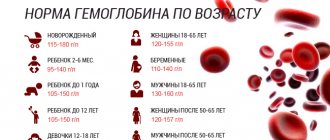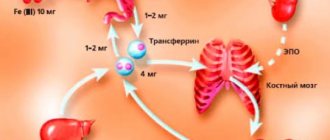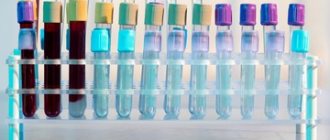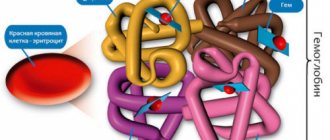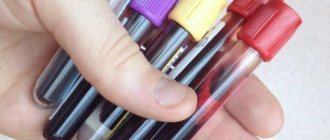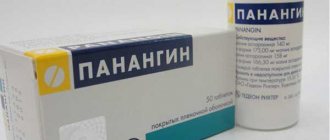Hemoglobin is an organic iron-containing protein. It is found on the surface of red blood cells - erythrocytes. The main task of hemoglobin is to provide all tissues of the body with oxygen. Accordingly, when the level of iron-containing protein in the blood is low, doctors talk about hypoxia. Oxygen starvation leads to the development of dangerous consequences. In this regard, it is necessary to take measures when the first signs of hypoxia appear. Initially, you need to make adjustments to your diet. No drug treatment regimen will lead to a positive result if you do not follow a diet, and vice versa. Below is information about which fruits increase hemoglobin, and what else you need to eat to increase the level of iron-containing protein in the blood. In addition, the nuances of the diet are described and a sample menu is compiled.
Why do you need to increase hemoglobin?
The pathological condition is dangerous due to the development of oxygen starvation of internal organs, including the brain. Against the background of hypoxia, the process of destruction of nerve cells and atrophy of muscle tissue begins. In addition, blood vessels become less elastic and thinner. A natural result of hypoxia is also a disruption of the functioning of the cardiovascular system, and diseases often become chronic in a short time.
Low hemoglobin levels pose a serious danger to newborn babies. This is due to the fact that their nervous system continues to actively develop after birth, which requires oxygen in large quantities. The lower limit of normal hemoglobin for newborns is 180 g/l. If the rate drops to 130 g/l, there is a risk of developing brain pathologies.
The norm for women (also expressed in g/l) is no less than 120 and no more than 150. The lower limit for men is 130, the upper is 160. In older people, the hemoglobin level is slightly increased (about 180 g/l). This is not considered a deviation and does not require immediate medical intervention. During pregnancy, the indicator also changes. The norm for expectant mothers is no less than 110 g/l and no more than 155 g/l. Such indicators are due to changes in blood flow during pregnancy.
You should consult a doctor if the following warning signs occur:
- a constant feeling of fatigue that does not go away even with a properly organized day and night routine;
- frequent episodes of headaches with normal blood pressure;
- yellowness of the skin;
- weakness of muscle tissue;
- deterioration of the condition of nails and skin;
- dyspnea;
- presence of at least one episode of impaired consciousness.
If low hemoglobin is suspected, the doctor will refer the patient for examination. Based on the diagnostic results, the specialist draws up an effective treatment regimen. In addition, he tells you which fruits can increase hemoglobin and what else to include in your diet to normalize the level of iron-containing protein in the blood. After completing the course of treatment, it is necessary to have your blood tested again.
Normal concentration
In order to establish the level of the described compound in the blood of children and adults, it is enough to do a general blood test, which is carried out in the laboratory of any local clinic. The resulting figures must correspond to the following indicators:
- For men, the norm is considered to be from 130 to 160 g/liter. It is necessary to increase the content of this compound if hemoglobin has dropped below 120. The maximum permissible concentration is 180 g/liter.
- For women, the usual figure is between 120 and 140 g/liter. During pregnancy, low hemoglobin is indicated when its content decreases to less than 110 g/liter.
- In children, these numbers change upward depending on age. The process stabilizes when the teenager reaches 18 years of age.
Iron-containing fruits
Your diet should include fruits rich in microelements. In particular, they must contain iron. The indicator of organic protein in the blood directly depends on its quantity.
Doctors have long determined which fruits increase hemoglobin. These include:
- Grenades. These are unique fruits that have a number of beneficial properties. Pomegranate is a fruit that increases hemoglobin in the blood, strengthens the immune system and normalizes overall tone. It contains anthocyanins. These are special substances that promote hematopoiesis. After eating pomegranate, the liquid connective tissue is enriched with oxygen, and the body cells are enriched with nutritional components. The natural result is an increase in hemoglobin levels.
- Apples. 100 g contains 2.2 mg of iron. Doctors recommend eating dried apples. This is due to the fact that 100 g of dried fruit contains almost 3 times more iron. If you need to normalize your hemoglobin level, you need to eat 2 apples daily. At the same time, it is recommended to give preference to varieties whose cut quickly darkens in the air. Such fruits are considered the most beneficial for the blood.
- Bananas. Contains only 0.2 mg of iron. But they are rich in folic acid, which is responsible for good absorption of the microelement by the body. Without the supply of vitamin B6, the process of iron synthesis to hemoglobin does not start. In this case, the microelement is excreted from the body with feces. In this regard, all persons interested in which fruits increase hemoglobin need to know that folic acid (vitamin B6) is necessary for the absorption of iron.
- Grapefruit. This fruit is a leader in vitamin C content. Frequent consumption of grapefruit significantly accelerates metabolism and absorbs iron much better. As a result, a person’s hemoglobin level increases in a short time and unpleasant symptoms disappear.
- Peaches. In dried form they contain a large amount of iron - 3 mg. It is important to remember that the trace element is the main raw material for the synthesis of hemoglobin. If you eat peaches daily, within a few days the level of organic protein in your blood can increase by 10 units.
- Apricots. These fruits are recommended to be preferred by women for whom it is important to know which fruits increase hemoglobin during pregnancy. Any plant products are potential allergens, however, after eating apricots, the likelihood of an undesirable reaction is minimal. Moreover, the fruit contains 2.6 mg of iron. A record amount of microelement was found in dried fruits - up to 12 mg (for every 100 g of product).
- Pears. When fresh, they contain up to 2.5 mg of raw materials for hemoglobin synthesis. At the same time, dried fruits are considered more beneficial for the circulatory system. 100 g of dried fruit contains 12-13 mg of iron. In winter, it is recommended to consume canned pears, as well as marmalade, jam and compote based on them.
- Plums. Doctors recommend eating several fresh fruits daily. Plums contain about 2 mg of iron. Like most fruits, the amount of microelement is much higher in dried fruits (prunes) - up to 13 mg. But the latter are high in calories.
Regular consumption of fruits, which increase hemoglobin in the blood, significantly improves the functioning of internal organs. This is due to the fact that a sufficient amount of organic protein provides all tissues with oxygen in the required volume.
What to eat if the blood vessels do not have enough oxygen
- Everyone who has ever had to deal with iron deficiency has heard about the healing properties of pomegranate. Many people drink half a glass of concentrated juice several times a day before meals, but only a few know that for greater effect it is necessary to use the entire fruit. That is, with the peel and films that separate the grains. According to one of the recipes, the pomegranates must be thoroughly washed and then passed through a meat grinder several times without peeling. The resulting mass is squeezed through cheesecloth so that seeds and other solid particles do not get into the juice. This drink should be consumed diluted – in a 1:1 ratio.
- Walnuts are also included in the list of products for increasing hemoglobin. This is not a panacea, but another effective means for a gradual return to a healthy life. Moreover, not only their kernels are useful, but also the partitions containing alkaloids, vitamin C, iodine and other useful organic substances. The infusion of partitions is consumed several times a day before meals. However, do not forget that this drink has its contraindications. If you doubt that such treatment will bring tangible benefits, use a proven recipe: nuts with honey.
- Laminaria will help cope with anemia. Just 100 g of algae contains 12 mg of useful microelement, the deficiency of which leads to oxygen starvation. We recommend consuming this superfood not only in its natural form - it is contained in dietary amaranth bran, which will become an excellent basis for a healthy breakfast.
- What other foods increase hemoglobin in the blood? Among the leaders in iron content are herbs and seasonings for dishes. Nettle, mint, dandelion root, yarrow, citric acid help restore strength and increase an important indicator.
- If you have been diagnosed with anemia, include buckwheat, beans, and lentils in your diet. These components of proper nutrition contain a lot of iron and will be useful for deteriorating health, dizziness, pallor and other signs of anemia. If you want to diversify your diet, try amaranth bran with buckwheat - an excellent option for a hearty dietary snack.
- Meat is another product that should be in your diet if you have low hemoglobin. These are tongue, kidneys, heart, chicken fillet, rabbit, beef.
- Beetroot (beetroot juice) also contains a lot of iron. It is better to drink it diluted, adding apple, carrot or orange juice to it.
- Dark chocolate is a sweet help for anemia. If you adhere to a healthy lifestyle, pay attention to dietary treats - they are not only tasty and healthy, but also low in calories.
- Fruits are a real salvation for those who are faced with the problem of iron deficiency. This microelement is found in apples, plums, bananas (it is better to take greenish ones, not overripe ones), and peaches.
- Desserts made from fresh berries not only lift your spirits and remind you of summer, but also normalize hemoglobin levels in the blood. This works best with currants, cranberries, and viburnum.
- Another healing ingredient in many dishes, which is not as popular as pomegranate or nuts, but is highly effective, is flaxseed. It can be consumed dry or added to baked goods, porridge, cottage cheese, and kefir.
The table below shows the main foods that increase hemoglobin in the blood.
Berries for low hemoglobin
When fresh, they are of the greatest value, as they contain not only iron, but also vitamins that promote the absorption of microelements. In other words, berries are not inferior in composition to fruits.
Which berries increase hemoglobin:
- Currant. 100 g contains up to 1.5 mg of iron. At the same time, in order to increase the level of organic protein in the blood, it is recommended to give preference to black currants. Berries are rich in vitamin C, which promotes the absorption of iron in the body.
- Raspberries. Contains 0.7 mg of microelement. In addition, raspberries contain a large amount of vitamins and minerals.
- Blackberry. Contains 0.62 mg iron. In winter, it is recommended to consume berries in the form of jelly.
- Strawberry. Rich in ascorbic acid, which helps the body absorb iron. The microelement itself is small in strawberries - 0.42 mg.
- Grape. The most useful are raisins. Dried grapes contain 10 times more iron than fresh ones. And this is 3 mg. It is recommended to consume raisins in their pure form or add them to desserts and cereals.
It is advisable to eat nuts along with berries. To increase hemoglobin, it is recommended to include cashews in your daily menu.
Vitamin B12 deficiency
If anemia is caused by a lack of cobalamins, as vitamin B12 is also called, it is recommended to eat more foods that can increase their concentration in the body. For example:
- oysters;
- herring;
- sardine;
- eggs;
- soy sauce;
- salmon.
Small amounts of the trace element are found in other seafood and meat.
As for people who prefer only plant foods, to increase the level of vitamin B12 they need to additionally take appropriate medications that contain cobalamins.
By the way, you can make up for the lack of vitamin B12 in the following way. It is enough to consume brewer's yeast daily, which forces the body to independently synthesize cobalamins, which leads to the restoration of hemoglobin levels in both adults and children.
Iron-containing vegetables
Other plant foods are excellent sources of iron (as are fruits). Which vegetables increase hemoglobin:
- Beet. It can be consumed both raw and thermally processed. It is possible to normalize hemoglobin levels in a short time if you drink a glass of beet juice every day.
- Carrot. It is recommended to consume it fresh, for example, add it to all salads. You can get a powerful dose of iron by drinking just 200 ml of freshly squeezed carrot juice per day. At the same time, it can be mixed with beetroot in a 1:1 ratio. Carrots also contain vitamins and microelements that promote better absorption of iron.
- Tomatoes. Tomatoes have a positive effect on blood composition, they saturate it with useful components and help increase hemoglobin levels. At the same time, tomatoes can be consumed not only fresh. The beneficial properties of the product practically do not disappear after heat treatment.
- Potato. It is recommended to give preference to red tubers, as they contain more iron. Potato juice is considered the most beneficial. It must be consumed daily half an hour before meals.
- Zucchini. They contain not only iron, but also vitamin C, which promotes better absorption of the microelement. It is recommended to squeeze the juice from the zucchini and mix it in a 1:1 ratio with potato or carrot. This drink is an excellent source of iron.
Thus, vegetables and fruits that increase hemoglobin in the blood can be consumed both fresh and thermally processed. It is recommended to prepare juices from them. They are quickly absorbed from the intestines and have a positive effect on the body.
Not a child’s problem: raising the level of iron in a child’s blood
| Foods that increase hemoglobin | Products that lower hemoglobin |
|
|
Drinks also affect hemoglobin. Green and black tea have a negative effect on the indicator, and rosehip decoctions, compotes and juices from red vegetables bring hemoglobin back to normal.
Fruits
Fruits are an obligatory attribute of therapeutic nutrition, but not all of them can be consumed with low hemoglobin.
| Fruits that increase hemoglobin | Fruits that lower hemoglobin |
|
|
Fruits are useful to eat fresh or in the form of juices. Baked fruits are not beneficial.
Foods that increase hemoglobin
In order for the organic protein level to be normal, women need to consume at least 18 mg of iron daily, men - 10 mg. At the same time, the diet should include not only vegetables and fruits. It is also possible to increase hemoglobin with animal products.
You must include in your diet:
- liver (pork, chicken, beef);
- beef;
- lamb;
- pork;
- chicken;
- turkey;
- heart (beef and pork);
- language.
In addition, the following foods are rich in iron:
- mussels;
- oysters;
- sardines;
- yolk of chicken and quail eggs;
- pistachios;
- spinach;
- peas;
- lentils;
- porridge: barley, buckwheat, millet, oatmeal;
- peanut;
- cashew nuts;
- Pine nuts;
- corn;
It is important to know not only what foods and fruits increase hemoglobin. It is necessary to regularly eat foods rich in vitamins C and B6. Thanks to these substances, iron will be better absorbed in the body.
Sample menu
It is important to eat not only vegetables and fruits that increase hemoglobin. The diet should be both varied and complete.
You need to eat 6 times a day. In this case, the total serving size consumed at one time should not exceed 200 g.
The following products are best for breakfast: fish and meat (boiled), vegetable stew, porridge (buckwheat, rice or oatmeal), bread, boiled egg (chicken or quail), freshly squeezed juice. In the morning you need to eat one or two dishes.
During the second breakfast, you can eat fried fish, beets, carrots, stewed cabbage or tomatoes. During this period, it is best to drink food with milk.
Lunch should be filling. You need to eat the first and second courses, as well as dessert. The best options for lunch are: soup (any kind, but with meat broth), liver (fried or in the form of pate), porridge, vegetable salads, fruits, cheese, juice.
During the afternoon snack, it is recommended to give preference to berries. If they are absent, use fruit.
For dinner, it is advisable to eat a dish of meat or fish. As an alternative, stewed vegetables and cottage cheese casserole can be used.
Before going to bed, it is recommended to drink a glass of yogurt or kefir daily.
Doctors' recommendations
Most patients are only interested in what fruits increase hemoglobin and what else they need to eat to normalize the level of organic protein in the blood. Practice shows that it is not always enough to just make adjustments to your diet. It is necessary to take into account some nuances.
Doctors' recommendations:
- Pasta, wheat bread and alcohol-containing drinks should be excluded from the menu. This is due to the fact that they interfere with the absorption of iron. The trace element is oxidized in the gastrointestinal tract, due to which hemoglobin can no longer be synthesized from it. As an exception, it is permissible to drink 50 ml of red wine with dinner.
- Meals must be fractional.
- It is important to know not only which fruits increase hemoglobin in the blood, which foods, vegetables and juices to give preference, but also that the iron from them is not fully absorbed, but only partially. In this regard, doctors recommend additionally taking medications containing microelements. The most effective are the following products: “Ferrum Lek”, “Sorbifer Durules”, “Tardiferon”, “Irovit”, “Heferol”.
It is not prohibited to turn to alternative medicine methods. For example, a decoction based on red clover helps increase hemoglobin.
Natural remedies to increase Hb
In addition to nutrition, traditional medicine will help with low hemoglobin. At home, you can prepare delicious, healthy remedies based on simple ingredients to quickly normalize your blood composition and improve your well-being.
Recipes:
- Grind the beets in a medium-sized meat grinder and squeeze the juice through cheesecloth. Leave it to sit in the open air. Dilute with cool boiled water in a ratio of 1 to 2. Drink 50 ml 2-3 times a month during the day.
- The same method, but instead of water, you need to take 4 parts of apple juice. The vitamin C contained in it will improve the absorption of iron into the blood, so the remedy will act faster.
- Wash the fresh dandelion root and grate it. 1 tbsp. l. pour 150 ml of boiling water, cover with a lid, leave for 3 hours. Strain and store in the refrigerator. Take the resulting decoction 1 tbsp. l. in the morning and before bed.
- Grind 3 tbsp. l. rose hips, place in a thermos, pour 500 ml of boiling water. Leave for 4-6 hours (preferably overnight). After cooking, drain the broth, add 2 tbsp. l. natural honey, divided into two doses. Drink warm.
- You can prepare a vitamin mixture that increases hemoglobin, immunity, improves brain and heart function from dried fruits, honey and nuts. You will need 100 g of dried apricots, raisins, figs, hazelnuts. Grind all ingredients in a meat grinder to obtain a homogeneous mass. Add 250 ml of liquid honey, juice of one lemon with pulp. Mix and store in a glass, sealable container in the cold. Every morning before breakfast, eat 1 tbsp. l mixture (children 1 tsp).
- 1 tbsp. l. Pour a glass of hot water over nettle leaves and buckwheat inflorescences and leave for 2 hours. Drink 50 ml 3-4 times a day.
- Sort out the green (not roasted) buckwheat and grind in a coffee grinder until it becomes a homogeneous powder. Add 1 tbsp. l. in food or eat with water or juice every day.
- A cleansing salad helps remove slagging from the intestines, which improves iron absorption and saturates the body with vitamins and microelements necessary to increase hemoglobin levels. Grate or cut into thin strips one carrot and one beet at a time, add a little vegetable oil to taste, squeeze out a few drops of lemon juice. Eat for breakfast or dinner.
Increased hemoglobin
This condition is also dangerous. Blood viscosity increases, and therefore there is a risk of developing thrombosis.
Next we will talk about what fruits you can eat with high hemoglobin. Green fruits should be included in your diet. They contain minimal amounts of iron.
Interferes with the absorption of the microelement calcium. Accordingly, in order to lower hemoglobin, it is necessary to consume cheese, feta cheese, condensed milk, milk chocolate, cottage cheese, wheat bread, pasta, yogurt, curdled milk, boiled shrimp and crab, and butter as often as possible.

